#Chinchorro
Explore tagged Tumblr posts
Text
Chinchorro Mummies

Chinchorro mummies, including the example you mention from around 5020 BC, in the Atacama Desert, represent some of the oldest known intentionally preserved human remains in the world.
These mummies predate the more famous Egyptian mummies by thousands of years, showcasing the advanced mortuary practices of the Chinchorro people, a preceramic culture that lived along the coasts of present-day northern Chile and southern Peru.
The extreme dryness of the Atacama Desert, one of the driest places on Earth, played a crucial role in the natural preservation of these remains.
The lack of moisture in the environment inhibited the growth of bacteria, which are typically responsible for decomposition, allowing soft tissues, hair, and even clothing to survive for millennia.
What sets Chinchorro mummies apart is that this culture practiced intentional mummification, beginning as early as 5000 BC.
They developed intricate techniques that included removing the skin and organs, reinforcing the body with sticks and clay, and sometimes painting the exterior, often with black manganese or red ochre.
This practice suggests that the Chinchorro people had a profound respect for their dead, possibly seeing mummification as a way to maintain a connection with their ancestors.
The mummy in the photo is a poignant example of how the Chinchorro culture intertwined with the unique environmental conditions of the Atacama Desert to create a lasting legacy.
These preserved individuals offer a rare and invaluable glimpse into life and death in the ancient world, as well as the technological ingenuity of a civilization that thrived long before written history.
#Chinchorro Mummies#Atacama Desert#preserved human remains#mortuary practices#Chinchorro#preceramic culture#chile#peru#preservation#intentional mummification#Chinchorro culture#Chinchorro people#environmental conditions#ancient history#ancient world#ancient civilizations#technological ingenuity#written history#history
10 notes
·
View notes
Text

CHINCHORRO
The Chinchorro mummies are mummified remains of individuals from the South American Chinchorro culture, found in what is now northern Chile. They are the oldest examples of artificially mummified human remains, having been buried up to two thousand years before the Egyptian mummies.
[wiki]
9 notes
·
View notes
Text
🐟🇨🇱 Тисячі викинутих на мілину риб з'явилися у вівторок на пляжах Чилі.
Подія сталась в Чінчорро, поблизу сектора Ла Пунтілья, провінція Аріка. Влада з'ясовує причини, розглядаючи можливі версії:
1. Екологічна катастрофа: Масова загибель риби може бути наслідком забруднення води або змін у температурі моря, що призвели до кислородного голодування.
2. Техногенна аварія: Можливо, викид риби спричинений діяльністю місцевих риболовецьких суден або іншими промисловими факторами, як-от витік токсичних речовин.
3. Природний феномен: Масовий викид може бути результатом природних факторів, таких як зміни течій, зміщення екосистеми або хвороби серед риб.
📹: відео з соцмереж
#екологія#ecology#chili#chinchorro#La Puntilia#Arica#fish#ecocatastropha#чилі#риба#мор риби#риба викинулась на берег
2 notes
·
View notes
Note
🌻
I didn't forget about you, I just got distracted a lot as I was writing this.
Many of the people who believe that the Egyptians are among the first, or very first, to practice mummification would be intrigued to know that there is another civilization who had practiced mummification for two or three millennia prior. With the new found recognition of the oldest human-made mummies in the world belonging to one culture and recognized by UNESCO, the Chinchorro are once more walking with the living. The Chinchorro are a long extinct culture, with an the estimated range of 7000 to 1500 BCE that had lived in the regions of Southern Peru and Northern Chile on the west coast of South America. These people have brought many an archeologist great joy with the sheer amount of knowledge that can be found regarding the topic of this bare bones dissertation: mummification.
As their culture was relatively long lasting there have been shifts of their practices regarding the process of mummification. Right at the start there is a glaring difference between Chinchorro and Egyptian mummies. While the Egyptians chose who got mummified, and had got paid for it, the Chinchorro practiced mummification on all of the dead, regardless of age or gender. However, unlike the Chinchorro, death was biased. The very land which gave them access to plenty of fish was poisoning them with arsenic.
One leading theory on why they practiced mummification as they did was due to their high infant mortality rate, which is recorded by the amount of infant mummies against adult mummies. Arsenic was also not the only thing poisoning them, as manganese is also toxic and heavily used in the funerary practices. Red ochre is non-toxic. The reason for why those were labeled toxic or non toxic will be expanded upon below.
At this moment in time, there are three known distinct periods that the dead were treated with. The oldest method has been coined ‘Black Mummies’ that were largely practiced around 5000 BCE. In between was the ‘Red Mummies’ that was used around 3000 BCE and made way for the last technique. Being the last, but not exclusive, mummification process used, the ‘Bandaged Mummies’ have a largely unknown time scale. The following paragraphs will go into greater detail of the Chinchorro exciting way of living with the dead.
If you do not wish to learn the detail of mummification you can skip to the next paragraph. Beginning with the base process as a reference point for all three techniques. Strong evidence shows that the family who experienced the loss would handle the mummification, with the woman likely in charge of the process. It has been found that since the women would be in charge of cutting and cleaning the meat of kills, they were then chosen, or chose, the delicate task of deskinning the dead and removing the muscles. After the flesh had been removed the organs followed and thus begins the changes of the techniques.
With ‘Black Mummies’ their chest cavities would remain empty, their skeletal structure was reinforced with sticks, and then the skeleton would be molded with clay to reform the body. Following that, the skin was placed back on the body and would be painted black using manganese, and a black clay facial mask would be placed. The mask itself would have accurate recreations of the eyes, mouth, and mouth. The end product would leave a hollow space on the inside, and the head was largely left alone. Once it was finally finished the mummies would then be buried in plots much like the ones that we use today.
Used during the height of practiced mummification; ‘Red Mummies’ would have the same methods as their predecessors but would instead have their entire body (including the head) emptied then stuffed with plant fibers, clay, and animal fur/feathers. The body was also built back up with clay with the skin also placed back onto the body and then painted red with red ochre. The death mask was also painted using black paint and black hair was added to the head. These mummies were also buried in plots and similarly to the ‘Black Mummies’.
Moving on to the last practice during the waning of the Chinchorro, the ‘Bandaged Mummies’. These were largely similar to the ‘Red Mummies’ and mostly differed by having their skin put back onto the bodies like bandages. Which is where they got the name ‘Bandaged Mummies’. As this is the last known practice, it is currently unknown when this was last used among the Chinchorro population. These mummies were also buried like their predecessors.
Which leaves on to the last segment: the burial. As the Chinchorro were near the coast, reeds were common to find and their usage in making the equivalent of burial shrouds/caskets. All of that would not be enough to ensure that the mummies still wouldn’t decay but the arid climate from the Atacama Desert helped stave off the worst of the damage to human history. Climate change, however, is destroying the bodies of loved ones long since passed and the bodies are quickly degrading by the rising humidity off the coast that the Chinchorro once called home.
I’m normal about things, why do you ask? Stop doubting me, you’re the one who read it on tumblr!
Favorite misspelling: Chinchorror
Sepúlveda, M., Rousseliere, H., Van Elslande, E. et al. Study of color pigments associated to archaic chinchorro mummies and grave goods in Northern Chile (7000–3500 B.P.). herit sci 2, 7 (2014).
Christopher Hewitt, The Chinchorro Created Mummies Thousands of Years Before the Egyptians (2014).
UNESCO, Settlement and Artificial Mummification of the Chinchorro Culture in the Arica and Parinacota Region.
Paul Karoff, Saving Chilean mummies from climate change (2015).
source: trust me bro /j
#chinchorro#archeology#mummification#south america#south american history#unesco#unesco world heritage#dissertation#source: trust me bro#i was joking about that last one#i hope
2 notes
·
View notes
Text
Descubre Arica: El Tesoro del Norte de Chile
Bienvenido a Arica, una ciudad que te cautivará no solo por su eterno clima primaveral sino también por su rica historia, cultura vibrante y paisajes impresionantes. Situada en el extremo norte de Chile, Arica es un destino que promete experiencias inolvidables para todo tipo de viajeros. A continuación, te presentamos los mejores lugares para visitar y algunos tips para aprovechar al máximo tu…

View On WordPress
#Alacran#Anzota#Casino#Catedral#chinchorro#Concordia#cuevas#humedal#Isla#Laucho#Lisera#Lluta#morro#museo#norte#Parques#Plazas#San Marcos#San Miguel
0 notes
Text
Les momies Chinchorro, les plus anciennes momies du monde
Nouvel article publié sur https://www.2tout2rien.fr/les-momies-chinchorro-plus-anciennes-momies/
Les momies Chinchorro, les plus anciennes momies du monde

0 notes
Text


Mexican biologist Yuliana Bedolla
Off Mexico's west coast, the Baja California Pacific Islands are key global nesting sites for 23 seabird species and Natividad Island shelters 90 percent of the breeding population of the Black-vented Shearwater (Puffinus opisthomelas).
Mexican conservation biologist Yuliana Rocío Bedolla Guzmán, Director of the Marine Birds Project at Grupo de Ecología y Conservación de Islas (GECI) says that invasive mammals like cats and rats wiped out at least 27 seabird colonies in the past.
The researchers have been working with fishing cooperatives to decrease the likelihood of reintroductions that would lead to expensive eradication efforts.
"In 2021, we created the local community group “Líderes Comunitarios'' formed by enthusiastic and committed women who have received formal training on island biosecurity and bird identification, and are becoming agents of change in their communities," Bedolla says.
Recently, Bedolla won a 2023 Whitley Award from UK charity Whitley Fund for Nature (WFN) and will use the funding to boost the role of local women and fishing cooperative.
"The goal is to continue preventing the accidental introduction of invasive mammals on Natividad and San Benito Oeste islands by actively involving local leaders and fishing cooperatives in biosecurity protocols," she says.
"My Grain of Sand"
Bedolla grew up far from the sea in Moroleón, a small town in central Mexico, where she enjoyed being out in nature.
"But I had my Eureka moment when I learned to snorkel when I was 12 years old at a beach in Zihuatanejo, Guerrero, in the Mexican Pacific," she says adding that she remembered a feeling of amazement, wonder and a new sense of connection to nature.
"That experience was life-changing for me and marked the beginning of my journey as a conservationist," Bedolla says, "From that moment on, I knew I wanted to become a marine biologist and contribute with my grain of sand."
She would go on to study Marine Biology at the Universidad Autónoma de Baja California Sur in La Paz, Baja California Sur, Mexico, learning to dive and study coral reefs and associated invertebrates on several islands in the Gulf of California.
Bedolla would contact GECI in the course of her masters degree and years later, after a Phd in Germany, GECI offered her the directorship of the Marine Birds Project.
Bedolla says that being from the Global South helps her to bring diverse perspectives and approaches to scientific research, which can lead to more innovative and creative solutions.
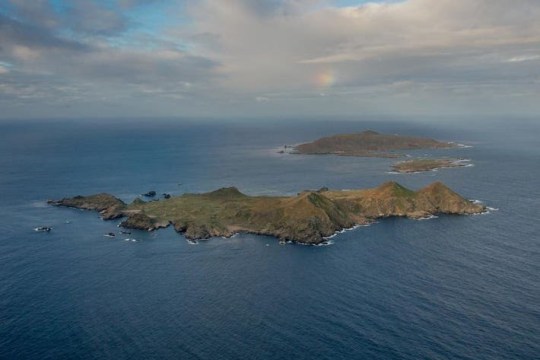
The San Benito Islands, which is among the islands Yuliana Bedolla is trying to protect from invasive species
Yuliana is a marine biologist, graduated with honors from the Autonomous University of Baja California Sur (UABCS).
She is a Master in Coastal Oceanography from the Autonomous University of Baja California (UABC) and a PhD candidate from the Justus Liebig University of Giessen in Germany. For her doctorate, she obtained a scholarship in Germany. Yuliana speaks Spanish and English and has basic knowledge of the German language. Her doctoral research focuses on the foraging ecology of three petrel species that nest in the San Benito Archipelago, in the Pacific of Baja California.
She began collaborating with the Ecology and Conservation of Islands Group, A.C., (GECI), in 2009 as a field biologist, and is currently the director of the Seabird Project, which aims to restore and conserve seabirds through the use of social attraction systems in conjunction with systematic monitoring, research and environmental education. She has carried out numerous research studies with national and international institutions. Her scientific publications in international journals focus on the response of seabirds to environmental conditions, the parasites that infect seabirds and the response of native fauna to the eradication of invasive mammals.
She has collaborated with several national seabird conservation programs and has been directly involved in environmental restoration projects in Isla Isabel, San Benito Archipelago, Banco Chinchorro and Arrecife Alacranes, related to the eradication of invasive rodents for the benefit of seabird colonies, among other island species. Her activities at GECI include project planning, staff coordination and supervision, applied research and monitoring, environmental education with local communities and dissemination of information in conferences and scientific reports and publications.
Source
#🇲🇽#Yuliana Rocío Bedolla Guzmán#STEM#mexico#baja california#pacific islands#animal#bird#rat#cat#GECI#2023 Whitley Award#Universidad Autónoma de Baja California Sur#Marine Birds Project#san benito islands#ecuador#banco chinchorro#scorpion reef#gulf of mexico#mexican#latina#hispanic#natividad island#Grupo de Ecología y Conservación de Islas
35 notes
·
View notes
Text
HI YES HELLO
Many of you have brought up sokushinbutsu on the poll as an option. I thought about what they would count toward, but part of it is that sokushinbutsu were intentionally made but through natural (and ritualistic!) means, so they're in kind of a gray area on the mummification chart. HOWEVER, I do think they count toward the sacred, purified air option because they were usually made in religious areas under extremely specific conditions. If you want to pick something in honor of the sokushinbutsu, go for that option!
#it's why clay bath isn't an option for like the chinchorro mummies#i guess 'accidental natural mummification poll' might be better but tbh we don't actually know if everyone was accidental#like i'm sure people figured out preservation works in a bog#and we know the people in the atacama desert knew what they were doing#same with the incan mountain mummies#idk maybe we need this in a tournament bracket style
3 notes
·
View notes
Text
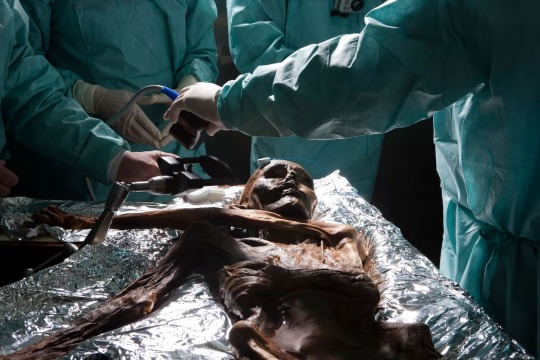
Brain samples are taken from the Copper-Age Mummy Ötzi, who was encased in ice shortly after death. This Natural Mummification preserved the body for some 5,000 years before its discovery in 1991. Photograph By Robert Clark, National Geographic Image Collection
These Mummies Were Made … By Accident?
Freeze-dried, salted, or buried in a bog: Thousands of years before humans intentionally mummified their dead, nature took care of it for them.
— By Elise Cutts | August 7, 2023
A mummy isn’t exactly something one would expect to make by accident.
Left to nature, a human body would usually be reduced to bones within a few years. Mummy-making cultures like the ancient Egyptians were only able to stave off the inevitable thanks to complex funerary practices involving all manner of specialized tools, chemicals, and procedures.
But there are paths to mummified eternity that don’t involve canopic jars, natron salts, or brain-removing hooks. In fact, some of the oldest Egyptian mummies were likely accidents, says Frank Rühli, director of the University of Zurich’s Institute of Evolutionary Medicine and head of the Paleopathology and Mummy Studies Group.
Buried in shallow graves, bodies can be naturally preserved for thousands of years by the dry heat of the Sahara’s desert air and sand. Rühli says he believes this could have inspired ancient Egyptians to start mummifying their honored dead.
Hot deserts are just one of many environments in which corpses naturally mummify. Scientists explain how environments ranging from bogs to icy mountaintops can stave off decay and—with a bit of luck—mummify bodies.
Deserts
The Egyptians aren’t the only desert culture known for their mummies. The Chinchorro people of northern Chile started to intentionally mummify their dead about 2,000 years before the Egyptians—and thousands of years before that, the Atacama Desert was doing it for them.
“One of the things that's interesting about the Chinchorro mummies is that some of them were intentionally prepared, while other were naturally mummified,” says physical anthropologist Bernardo Arriaza of the University of Tarapacá in Chile, who spent his career studying the Chinchorro mummies.
A bone-dry corpse, perhaps ironically, will likely leave more than bones.
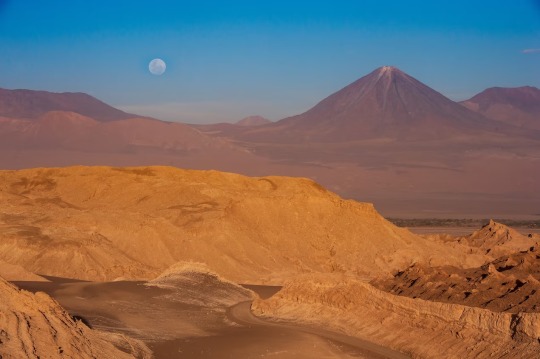
A Landscape of the Desert! The Atacama desert plateau is one of the driest places in the World. Mummies have been found here that predate ancient Egypt’s by 2,000 years. Photograph By Naftali Hilger, Laif/Redux
Decay is a biological process and without water, biology can’t work. This is why deserts preserve bodies so well and why Egyptian and Chinchorro mummification practices involved steps to dry out the body.
The oldest Chinchorro mummy, Acha Man, was naturally preserved by the desert for more than 9,000 years. Natural mummies have been found in deserts around the world. Among the most well-preserved are the Tarim mummies of Xinjiang, China, who were buried in boat-shaped coffins up to 4,000 years ago in the Taklamakan Desert.
Salt
For a handful unfortunate Iranian miners caught in cave-ins at the Chehrabad salt mine, salt did the job just as well as deserts.
"They were working in the salt mine and then it collapsed,” says Rühli, who studied the mummies. This actually happened multiple times—at least twice, says Rühli—over about 1000 years, entombing young men separated from one another by centuries in the salt they’d come to mine. Though the weight of the salt crushed the miners, flattening their corpses, the salty rock drew the water out of their bodies and mummified their squashed remains.
Salts in the dry soils of the Atacama Desert also helped preserve the Chinchorro mummies, says Arriaza. The soils are rich in nitrate compounds, nitrogen, potassium, sodium, calcium. “Mostly salts,” he says. “That's going to help dehydrate the body.”
Ice
Removing the water from a corpse isn’t the only way to stop decay. Low temperatures slow down most biological processes, and freezing a body completely can keep it from rotting for thousands of years.
Pathologist Andreas Nerlich of the Munich Klinik Bogenhausen studied Ötzi, a 5,300-year-old ice mummy who was found poking out of melting glacier ice in the Ötztal alps near the Austrian-Italian border. “They're preserved as long as the ice is there,” he says of mummies like Ötzi.
While “very rare,” adds Nerlich, ice mummies like Ötzi can be remarkably well-preserved compared to dehydrated mummies. That’s because dehydration shrivels and distorts tissues, but frozen organs mostly keep their shape.
Permafrost, earth that remains frozen year-round, can also mummify. One Siberian mummy, the 2,500 year-old Ice Maiden, was quite literally frozen in a block of ice after her burial chamber flooded and the water quickly froze. Because her burial chamber was constructed from permafrost earth, the ice that formed inside never melted.
Freeze-Drying
Combining cold and dry conditions can mummify bodies even when it’s not consistently chilly enough to keep a body frozen year-round. That’s what happened to a handful of Thule Inuit women and children in Greenland. They were naturally mummified in their graves after their deaths, likely caused by famine or disease, in the 15th and 16th centuries.
It’s a bit like natural freeze-drying, says paleopathologist Niels Lynnerup of the University of Copenhagen, who studied the mummies.
“Even though it's very cold in Greenland, it's not like it's in the high Arctic with permafrost,” he says. The bodies were buried under rocky covers or cairns, so “they still had wind blowing through.” The wind desiccated the bodies and, combined with the bacteria-slowing effect of cold temperatures, mummified them.
Many of the Inca mummies discovered high on Andean mountaintops were preserved by freeze-drying, too. The exceptionally well-preserved Maiden of Llullaillaco, the mummy of a teenage Inca girl left to succumb to cold on an Andean mountaintop as a sacrifice, is a unique case as she was frozen solid.
Even the conditions in cool, dry crypts can sometimes preserve remains in a similar way so long as bodies are either well-ventilated or kept under airtight conditions after being dried out, says Nerlich. Several natural mummies in crypts weren’t entirely accidents. One Upper Austrian mummy known as the Luftg’selchter Pfarrer was intentionally stuffed with water-absorbing materials and treated with salts to delay decay temporarily before he naturally mummified in his crypt.
Bogs
Natural mummification almost always involves somehow getting rid of water, either by removing it entirely or turning it into ice. So may be a bit surprising that wet, swampy bogs can preserve human remains for millennia.
The oldest bog mummy is Cashel Man, who was probably killed in a sacrifice around 2,000 B.C. His body was naturally mummified because of the unusual chemical conditions in bogs.
“There are several factors which cause human remains to be mummified in bogs,” says archaeologist Isabella Mulhall of the National Museum of Ireland. “The lack of oxygen, the cool dark environment… the [acidity] levels of the bog also has a role to play.”
A type of moss often found in bogs also helps mummify bodies, Mulhall adds. Sphagnum moss releases an acidic sugary molecule called sphagnan, which takes up the nutrients that would otherwise nourish microbes that cause decay. This helps mummify corpses—though sphagnan also leaches the calcium out of bones, weakening them.
The acidic fluids in bogs chemically alter the body, not unlike leather tanning or pickling. That’s why most bog bodies, no matter how they looked in life, have dark, leathery skin and bright red hair.
Many bog bodies appear to have met rather violent ends—a fate shared with many other natural mummies. But because luck happened to preserve their bodies, the victims of these ancient tragedies can still tell scientists about themselves and their societies. The same processes that mummify human skin and organs can also sometimes preserve undigested food in the stomach, blood, traces of disease-causing microbes, and even clues about the ecosystems and climates that ancient people lived in.
“In a sense,” says Arriaza, “all these ancient remains are time capsules.”
#Science#Copper-Age Mummy Ötzi#Natural Mummification#Robert Clark#National Geographic Image Collection#Freeze-Dried#Salted#Elise Cutts#University of Zurich’s Institute of Evolutionary Medicine#Paleopathology#Frank Rühli#Egyptians#Chinchorro people of Northern Chile 🇨🇱#Atacama Desert 🐪 🌵#Physical Anthropologist Bernardo Arriaza#University of Tarapacá Chile 🇨🇱#Egyptian & Chinchorro Mummification Practices#Acha Man#Taklamakan Desert#Chehrabad Salt Mine#Nitrogen | Potassium | Sodium | Calcium | Salts#Pathologist Andreas Nerlich | Munich Klinik Bogenhausen#Permafrost#Niels Lynnerup | University of Copenhagen#Thule Inuit Women & Children | Greenland 🇬🇱#Isabella Mulhall | The National Museum of Ireland 🇮🇪#Cashel Man
2 notes
·
View notes
Audio
(Miguel Chinchorro)
2 notes
·
View notes
Photo
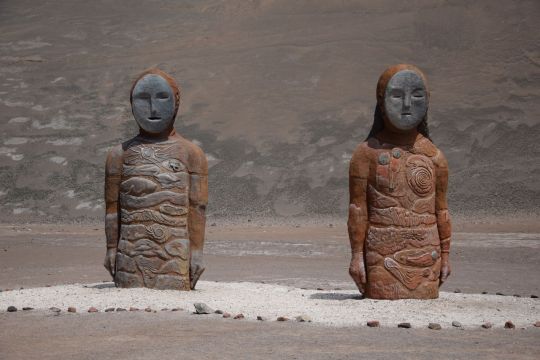
Paola Pimentel & Johnny Vasquez, Sculptures of Chinchorro Mummies, between Arica and Caleta Camarones, Chile, 2017
Paola Pimentel and Johnny Vásquez were the two artists in charge of giving life and capturing the figures of a couple of giant Chinchorro Mummies, recently inaugurated 100 kilometers from Arica, next to Cuya.
The works are capable of musicalizing the wind, thanks to the interaction of the breeze and the grooves of each sculpture, which generates a series of unique sounds.
The Chinchorro Mummies are installed in the rural town with the primary objective of highlighting the origins of this ancient culture, considered one of the oldest in the world.
863 notes
·
View notes
Text

Hamac, Guajira, Colombia: It is known that the history of the hammock has its roots in pre-Columbian times when it was the pride of the native populations. In ancient times, this territory was inhabited by aborigines from the Finzenú kingdom, which is one of the "three pre-Columbian kingdoms of the Zenú people", known for its textile production. The 100% handmade hammocks are woven in several regions of Colombia, the most famous are those woven in San Jacinto, a town in the department of Bolivar, and those made by the Wayuu Indians in La Guajira. Made entirely by hand by women of the Wayuu ethnic group, chinchorros are large hammocks created with artisanal weaving and garnishes made with crochet work.
#Hamac#Guajira#La Guajira Department#Guajira Peninsula#Colombia#south america#south american continent#Caribbean Region
95 notes
·
View notes
Text
For all the people excited about weaving via my earlier post
tbh you can make a loom out of just about anything. you just need something to hold the warp and something to separate the sheds, a shuttle, and something to beat the weft with (like a really long shuttle or a separate stick) Below is a picture of my great grandmother weaving a chinchorro (hammock). Wayuu weaving is a little different than what you're probably used to, but the basic thing to understand is the same. There's a bar at the top and a bar at the bottom, she's using her hands and small balls of yarn to wind the weft through, and tie warps together to make patterned gaps. No shuttle is involved. But if you wanted to you could easily add pickup bars (basically a long stick and shuttles to this type of setup and weave that way. It'd basically be a tapestry loom setup, but tbh you can weave just about anything, you just have to get creative with how you manage the sheds. I'd look up backstrap looms and translate the way the different bars are set in place for this kind of a setup. All you'd need is dowels or sticks of some sort for it. You could figure out a mini one on a box or a picture frame. Abuela had a floor to ceiling setup on one of the walls that was just basically a frame.
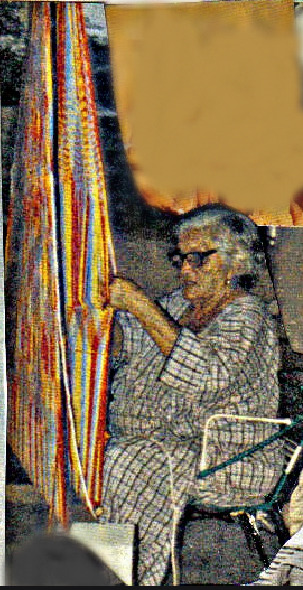
I wish I had photos of some of the chinchorros she made, they were beautiful. My uncle has a video somewhere of her weaving one with a horse on it and the artistry to it was absolutely gorgeous. I wish I'd gotten the chance to learn from her tbh, she was a brilliant artist from the work I've been able to see. I think it was cos of her that I inherited my love of weaving and textiles so much.
25 notes
·
View notes
Text
The Monster Mashup! Being a gang of badass looking monsters/vampires/cyborgs based in classic monsters from horror fiction, and some extras
-Dracula (has a pair of Rocket Launchers)

-Prometheus (based on the Frankenstein monster)

-Wolfdude and Soter (Werewolf and Mummy with the last one based on the chinchorro mummies)

-Igor (a bad bitch, don't trust him, his secretly ugly)

-Black Sabanas (a dude who becomes invisible via gadgets, based on Ghosts and The Invisible Man)

-Centaurus (just a (cyborg) centaur)

-Headless Horseman

-Dr.Jekyll and Mr.Hyde

There's a shitload of lore behind these dudes, but hey is just a game theory (i'm lazy to writting it rn)
#monster#monsters#classic monsters#dracula#frankenstein#werewolf#mummy#igor#ghosts#invisible man#centaur#traditional drawing#mechanical drawings#cyborg#vampires#horror#monster mash#blood
7 notes
·
View notes
Text
while popular memory associates horticulture with sedentarism - the idea being that hunter-gatherers are naturally nomadic, and sedetary societies are naturally agricultural - this relationship is challenged by long-lived cultural complexes such as the indigenous Pacific Northwest and the Valdivia culture of Ecuador, which developed sedentary life and immense material and social complexity without domesticating any identifiable food crops.
This paradigm is also made complicated by the clear-cut archaeological evidence of the Chinchorro culture of Chile and other sedentary fishing sites, where little evidence of food-oriented horticulture is found but sites of settlement persist for centuries. In the case of the Chinchorro culture and its predecessors, it's possible to identify fairly early independent domestication of wild cotton, which was used for support equipment - nets, ropes, etc - for a diet whose bedrock was apparently shellfish.
58 notes
·
View notes
Text

Preserved by the region's dry climate, the Chinchorro mummy has remarkably well-preserved skin, hair, and clothing.
Chile's Atacama Desert, from around 5020 BCE
6 notes
·
View notes